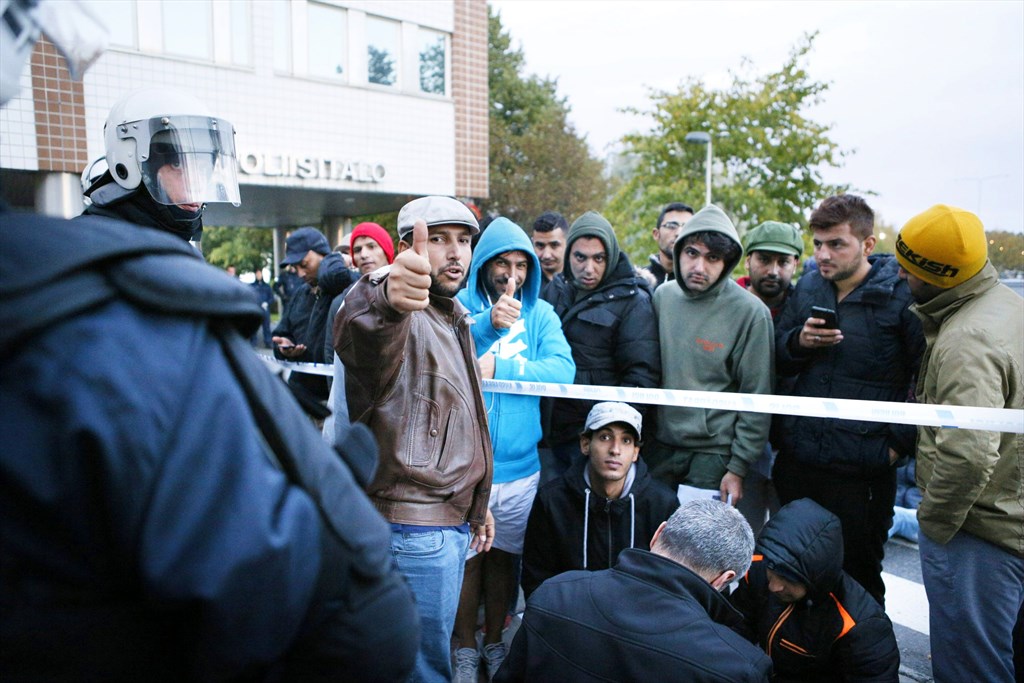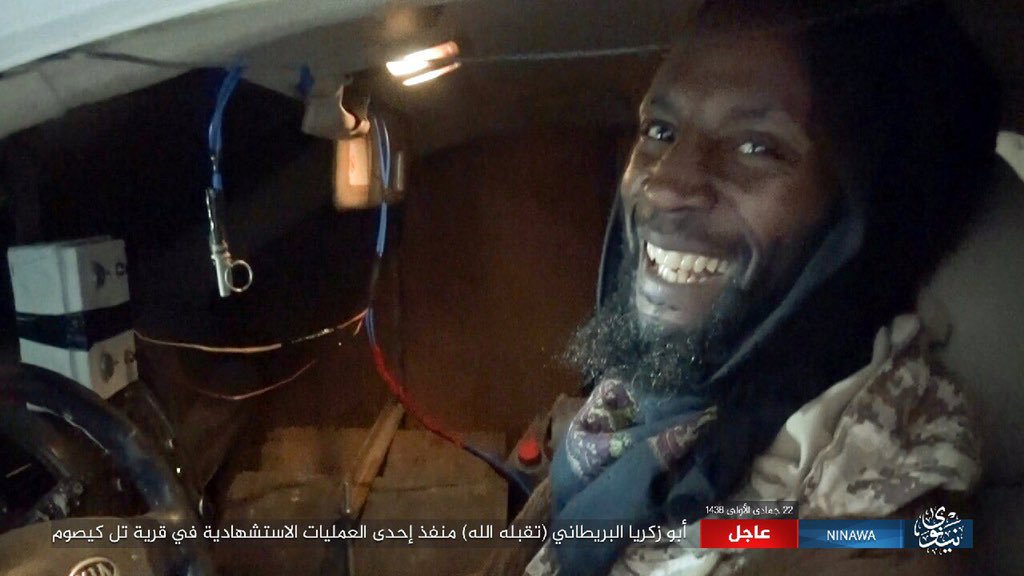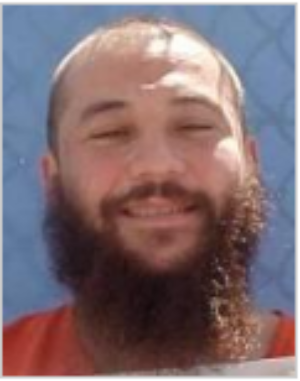D
Deleted member 266
Guest
Saattavat halutakin, mistä sen tietää, mutta uutinen AMV-ostoksista on TÄYDELLINEN UUTISANKKA; Irakiin ei saa vientilupaa, eikä kukaan ole edes yrittänyt ottaa yhteyttä Suomeen asiassa.
Follow along with the video below to see how to install our site as a web app on your home screen.
Note: This feature may not be available in some browsers.
Olisikohan Bushin klaania jäänyt vähän harmittamaan Persianlahden sodan jälkinäytös jossa Saddamia ei kaadettukaan vaan tämä murskasi nousseet kapinat julmasti? Tämähän herätti runsaasti arvostelua etenkin kotimaassa ja ehkä osaltaan vaikutti Bushin vaalitappioonkin (Bush Sr:n kannatuksen putoaminen n. vuodessa on sarjassaan legendaarinen). Ehkä poika halusi pistää tämänkin asian järjestykseen?
Entäs Etelä-Afrikan Badgerit? Heltiäiskö niille vientilupa?Saattavat halutakin, mistä sen tietää, mutta uutinen AMV-ostoksista on TÄYDELLINEN UUTISANKKA; Irakiin ei saa vientilupaa, eikä kukaan ole edes yrittänyt ottaa yhteyttä Suomeen asiassa.
Badgers will be licensed-produced in South Africa. Production is expected to begin in 2015. First production vehicles are planned to be delivered to South African National Defense Forces (SANDF) in 2015-2016. Deliveries are planned to be completed in 2022. These new armored vehicles will partially replace the ageing Ratels that are now more than 30-year old and. The Badger will become a mainstay of South African mechanized infantry force for many years to come. It is likely that the Badger will be also proposed for export customers.
IRAKIN erikoisjoukot kävivät lauantaina kiivaita taisteluita vallatakseen Mosulin yliopiston, jota terroristijärjestö Isis on käyttänyt kemiallisten pommien valmistamiseen.
Erikoisjoukot ovat saaneet haltuunsa monia osia laajasta yliopistoalueesta, esimerkiksi teknillisen instituutin ja hammaslääketieteen tiedekunnan, kertoi Irakin terrorisminvastainen erikoisjoukko uutistoimisto Reutersin mukaan.
Joukot ovat löytäneet yliopistolta kemikaaleja, joita oli yritetty käyttää aseiden valmistukseen, sanoi joukon komentaja Sami al-Aridhi tiedotteessaan.
Komentajan mukaan erikoisjoukot varautuvat siihen, että Isis pyrkii käyttämään kemiallisia aineita vastaiskuissaan.
IRAKIN joukkojen hyökkäys Mosuliin, maan toiseksi suurimpaan kaupunkiin, on kestänyt kolmisen kuukautta. Jihadistiliike Isis on ajettu karkuun suurimmasta osasta kaupungin itäosia. Mosulia halkovan Tigrisjoen länsipuoli on yhä Isisin hallussa.
Irakin ja Yhdysvaltain sotilaslähteet kertoivat jo viime vuonna, että Isis on käyttänyt Mosulin yliopiston laboratorioita ja välineitä valmistaakseen myrkyllisiä kemikaaleja sisältäviä pommeja.
Viime maaliskuussa Yhdysvaltain johtama liittouma teki ilma-iskun yliopistoalueelle pyrkien tuhoamaan laboratorioita.
MOSUL on on ollut kemiallisten aseiden valmistamisen keskus Isisin julistaman ”islamilaisen kalifaatin” alueella, kertoi yksityinen tutkimuslaitos IHS Conflict Monitor raportissaan marraskuun lopulla.
Viime vuoden aikana Isis käytti kemikaaleja, kuten klooria ja rikkihappoa, ainakin 52 iskussa Irakissa ja Syyriassa, kertoi IHS Conflict Monitor.
Suurin osa hyökkäyksistä tehtiin Mosulin lähellä.
Isisin kemialliset aseet ovat olleet kotikutoisia viritelmiä, joissa melko pieniä määriä aineita on laitettu esimerkiksi kranaattien tai kotitalouksissa käytettävien kaasusäiliöiden sisään. Tällaiset aseet aiheuttavat yleensä vahinkoa vain melko lähellä räjähdyspaikkaansa.
Esimerkiksi rikkisinappikaasu on syövyttävä aine, joka voi aiheuttaa palovammoja tai sisäisiä verenvuotoja ihokosketuksessa tai hengitettynä.
Asiantuntijat ovat pitäneet epätodennäköisenä, että Isisin taistelijoilla olisi kykyä valmistaa kehittyneempiä kemiallisia aseita.
Isisin epäillään myös siirtäneen asiantuntijoitaan ja laitteistoa Syyriaan ennen lokakuussa alkanutta Irakin asevoimien ja sen liittolaisten hyökkäystä Mosuliin.
KEMIALLISET aseet on luokiteltu joukkotuhoaseiksi ja niiden käyttö on kielletty kansainvälisillä sopimuksilla.
Syyrian sodassa kemiallisia aseita ovat käyttäneet myös presidentti Bashar al-Assadin asevoimat. YK:n tutkintaryhmä todensi ainakin kaksi hyökkäystä, joissa Syyrian asevoimat pudotti klooria sisältäviä pommeja helikopterista siviilialueille.
Vuonna 2013 Yhdysvallat uhkasi Syyriaa hyökkäyksellä kemiallisten aseiden käytön vuoksi. Yhdysvallat kuitenkin perui aikeet, kun Syyria suostui luopumaan kemiallisista aseistaan YK:n valvonnassa.
On epäselvää, onko Isis valmistanut kemiallisiin räjähteisiin tarvittavia aineita itse vai saanut niitä esimerkiksi Syyrian varastoista korruption tai väkivallan avulla.
Irakilla oli diktaattori Saddam Husseinin aikaan kemiallisten aseiden ohjelma. YK:n asetarkastajat sanoivat kuitenkin tuhonneensa varastot 1990-luvulla.
Yhdysvallat miehitti Irakin vuonna 2003 sillä perusteella, että se epäili Saddamilla olleen yhä joukkotuhoaseita. Niitä ei kuitenkaan löytynyt.
NYT taisteluiden kohteena oleva Mosulin yliopisto oli yksi Lähi-idän suurimpia korkeakouluja ennen kuin Isis valtasi kaupungin kesällä 2004.
Isisin uskotaan tuhonneen muun muassa yliopiston laajaa kirjastoa, johon kuului yli satatuhatta vanhaa käsikirjoitusta, karttaa muuta asiakirjaa.
Irakin hallituksen tavoite oli vallata Mosul Isisiltä viime vuoden loppuun mennessä. Jihadistiliikkeen viimeisen tukiaseman valtaaminen Irakissa on kuitenkin sujunut vaihtelevasti.
Mosulin taistelun lopputuloksessa on suoria vaikutuksia myös Suomessa olevien turvapaikanhakijoiden tilanteeseen. Suomeen tulleiden joukossa on paljon Mosulista paenneita ihmisiä.
Varsinkin noita erikoisjoukkojen sankaritekoja usein "vuotaa" julkisuuteen, vaikka virallisesti briteissä on sellainen politiikka ettei erikoisjoukkojen tekemisiä kommentoida hallinnon puolesta millään tavoin - varsinkaan silloin kun tulee turpaan, vaika enpä väitä että SAS saisi usein turpiinsa. Uskoisin että nuo SAS:aa koskevat jutut keräävät ihan kiitettävästi klikkauksia brittiläisillä uutissivustoilla ja miksei muuallakin, onhan tuo SAS aika tunnettu yksikkö maailmanlaajuisestikin.En tiedä tästä nimenomaisesta tapahtumasta, mutta jostain syystä tasaisin väliajoin tulee Brittiarmeijalta uusi uskomaton sankaritarina. Pysyypä ainakin kotikentän mieliala ylhäällä. Outoa sinänsä, että muiden armejoiden sotilaat eivät yllä vastaanvanlaisiin suorituksiin/otsikoihin.
En tiedä tästä nimenomaisesta tapahtumasta, mutta jostain syystä tasaisin väliajoin tulee Brittiarmeijalta uusi uskomaton sankaritarina. Pysyypä ainakin kotikentän mieliala ylhäällä. Outoa sinänsä, että muiden armejoiden sotilaat eivät yllä vastaanvanlaisiin suorituksiin/otsikoihin.
 "Written by Sandy McGrab"
"Written by Sandy McGrab" 

Irakin armeijan yksikkö avasi Mosulissa tulen terrorismin vastaista erikoisjoukkoa kohti. Taustalla ovat todennäköisesti kiistat armeijan ja erikoisjoukon välillä...
http://www.iltalehti.fi/ulkomaat/201702102200068821_ul.shtml
IRAK-ISIS 10-0

Ex-Guantanamo detainee carried out suicide attack near Mosul, Iraq
By Thomas Joscelyn | February 22, 2017 | [email protected] | @thomasjoscelyn

The British press buzzed yesterday with news that a former Guantanamo detainee known as Jamal al Harith (formerly Ronald Fiddler) had blown himself up in a vehicle-borne improvised explosive device (VBIED) in Iraq. Al Harith reportedly took part in the Islamic State’s defensive suicide attacks around Mosul, which is one of the organization’s de facto capitals. The so-called caliphate claims to have launched scores of suicide VBIEDs in defense of the city.
On the same day al Harith executed his attack (Feb. 20), the Islamic State’s Amaq News Agency released a short video of three SUVs being deployed as bombs. All three vehicles had armor added to the front. One of the three was presumably driven by al Harith. The Islamic State released a photo al Harith (seen above), identifying him by the alias Abu Zakariya al Britani. The group also issued a claim of responsibility for his bombing.
Al Harith’s death brings to an end one of the strangest stories in the history of the detention facility at Guantanamo. Along with four others, Al Harith was transferred to American custody in early 2002 after being found in the Taliban-controlled Sarposa prison.
According to leaked Joint Task Force-Guantanamo (JTF-GTMO) threat assessments, jihadis in Afghanistan accused all five men of being spies for foreign powers looking to infiltrate the Taliban’s and al Qaeda’s ranks. Sarposa (spelled “Sarpooza” and “Sarpuza” in JTF-GTMO’s files) was overrun by the Northern Alliance in late 2001 and the men (subsequently dubbed the Sarposa Five) were handed over to the Americans and then transferred to Guantanamo.

One of the other four men detained at Sarposa alongside al Harith was Ayrat Nasimovich Vakhitov, a Russian citizen. A photo of Vakhitov from his JTF-GTMO file can be seen on the right.
The US State Department designated Vakhitov as a terrorist in July 2016, saying he “is associated with Jaysh al-Muhajirin Wal Ansar” (JMWA, or “the Army of the Emigrants and Helpers”). The JMWA is a foreign fighter organization in Syria. One powerful faction in the group merged with the Islamic State, while the rest of the organization continued to operate independently before eventually swearing allegiance to Al Nusrah Front in Sept. 2015. Al Nusrah was the name of al Qaeda’s official branch in Syria until mid-2016. Its members are fierce rivals of Abu Bakr al Baghdadi’s Islamic State.
Vakhitov was arrested by Turkish authorities shortly before his designation. According to Voice of America, Vakhitov was “among 30 people Turkish authorities say they have arrested in connection with” the terrorist attack at Istanbul’s Ataturk airport in June 2016. The assault on the airport is widely suspected of being the work of the Islamic State. The State Department’s designation page does not mention Vakhitov’s reported arrest in Turkey, but does say he has “used the internet to recruit militants to travel to Syria.”
State also didn’t mention that Vakhitov was a former Guantanamo detainee, but FDD’s Long War Journal confirmed last year that he is the same individual. [See FDD’s Long War Journal report: Ex-Gitmo detainee, Islamic State’s leader in Chechnya designated by State Department.]
A murky past
In some cases, Guantanamo recidivists were well-known to authorities before they were transferred and rejoined the jihad. That was not the case with al Harith. Just two pages of JTF-GTMO’s intelligence on him have been made available to the public via a leak. It is possible that the US government has more information on his past. But the details offered in the JTF-GTMO memo are incredibly murky. The opening paragraph even notes that al Harith was “accused of being a British or American spy,” which is why he was held at Sarposa.
A senior US military commander recommended that al Harith be considered for transfer or release as of Sept. 2002, finding that he was “not affiliated” with al Qaeda and was not a Taliban leader.
Less than one year later, in July 2003, Joint Task Force – Guantanamo (JTF-GTMO) reversed this recommendation. Military intelligence officials concluded that al Harith should remain in US custody, as he was “assessed as being affiliated with” al Qaeda. JTF-GTMO concluded that he was “still of intelligence value” and posed a “high threat to the US, its interests and allies.”
However, the intelligence included in JTF-GTMO’s leaked threat assessment is thin and dubious.
For example, JTF-GTMO cited “sensitive information” indicating that al Harith “was probably involved in [a] terrorist attack against the” US. There is no indication which attack he was supposedly involved in.
Moreover, JTF-GTMO noted that he was not “questioned on his ties with those involved in this attack, nor has he been questioned on his own involvement.” It should be noted that other British detainees who were suspected of being tied to specific al Qaeda plots were held at Guantanamo for years after al Harith was transferred in Mar. 2004. If he was really suspected of involvement in a terror plot against America, it is likely that US officials would have fought to keep him in detention.
US military and intelligence officials were uncertain about al Harith’s past. The “timeline” for his “extensive travels in the Middle East” between 1992 and 1996 had “not been fully established” when JTF-GTMO’s assessment was written in 2003. He was “accompanied by Abu Bakr, a well-known al Qaeda operative,” on a trip “to Sudan in 1992 during the same time that Osama bin Laden and his network were” based in the country. However, US officials did not cite any specific intelligence linking al Harith to bin Laden. Instead, they found that the school al Harith claimed he attended in Sudan “did not exist” and that “foreigners” who traveled to Khartoum for “Islamic studies” were often “recruited for training in sabotage, kidnapping, improvised explosive devices, and commando training.” The file does not indicate that al Harith himself attended such training.
Then there was the issue of al Harith’s suspected travels to Pakistan and Saudi Arabia in the early 1990s. US military intelligence could draw no firm conclusions about his travels, at least according to the JTF-GTMO memo.
US officials did conduct a “PSYOP/JDOG” [Psychological Operation/Joint Detention Operations Group] “experiment” in Guantanamo’s Camp Delta. It was called “Dining Out,” because “ethnic food was prepared for a select group of detainees.” Al Harith “was noticed calling out to other detainees in other blocks that the food tasted just like that from a restaurant in Jedda, Saudi Arabia.” But al Harith told authorities he had never been to Saudi Arabia. He also claimed to have visited “Pakistan in the early 1990’s,” but “this information” had “not been exploited.”
It is clear from JTF-GTMO’s file that US officials thought al Harith was lying, but they didn’t really know what to make of his story. On Apr. 4, 2003, he was “administered a polygraph exam and was found to be deceptive.” He was specifically asked if he had “contact with any persons connected with extremist groups prior to going to Afghanistan and if he went to Afghanistan for Jihad.” Al Harith “answered ‘no’ to both questions,” but was found to be “deceptive each time.”
Still other purported details about al Harith’s past can be found on the old website for Cageprisoners, a detainee advocate group that has been renamed CAGE. The group is affiliated with Moazzam Begg, another former Guantanamo detainee. American officials alleged that Begg was affiliated with al Qaeda prior to his own detention. The British press, including the Daily Mail, have posted a photo of al Harith and Begg standing next to each other at an event.
Some of the details in Cageprisoners’s short biography match those found in JTF-GTMO’s file, but with an especially benign-sounding twist. The group described al Harith as “a gentle, quiet man who rarely spoke of his faith unless asked, and after four years learning Arabic and teaching English at Khartoum University in Sudan, he seemed happy enough to return home where he started to study nursing.” (The JTF-GTMO file indicates that US officials thought al Harith’s explanation of his time in Sudan was not truthful.) Al Harith returned to the UK but then, “at the end of September 2001,” decided to travel to Pakistan, “retracing a journey he had made to Iran in 1993.” Al Harith “paid a lorry driver to take him from northern Pakistan to Iran as part of a backpacking trip, but they were stopped near the Afghan border by Taliban soldiers who saw his British passport and jailed him, in October, fearing he was a spy.” He was allegedly “interrogated by the CIA” before being transferred to Guantanamo.
After his transfer from Guantanamo, Al Harith stayed in the UK until early 2014, when he fled to Syria and joined the Islamic State. His decision to leave Britain caused a minor uproar in the press, as the British government had paid him £1 million after he claimed that he was abused during his time in custody.
Al Harith was also a plaintiff in a lawsuit claiming that US officials had tortured and abused detainees, among other allegations. The case was ultimately dismissed. Al Harith’s co-plaintiffs are known as the “Tipton Three,” as they are from the town in England of that name. According to an account on the Guardian’s website, two of the three appeared on a television show, “Lie Lab,” in 2007. “Campaigners for the men have always maintained they were innocent tourists-cum-aid workers, caught up in the invasion of Afghanistan,” the Guardian’s account noted. But one of the men, Rhuhel Ahmed, was confronted with evidence suggesting “he was less than forthcoming with the truth” and subsequently “confessed” to “visiting an Islamist training camp” and “also handling weapons and learning how to use an AK47.” This caused some mild embarrassment for their advocates in the UK, as the “Tipton Three” were widely portrayed as “blameless heroes.”
